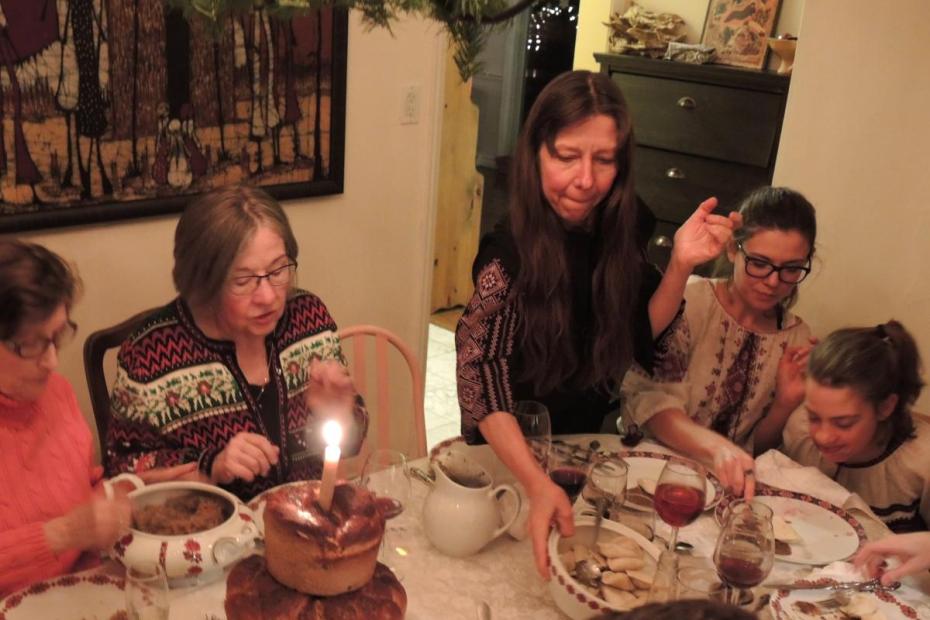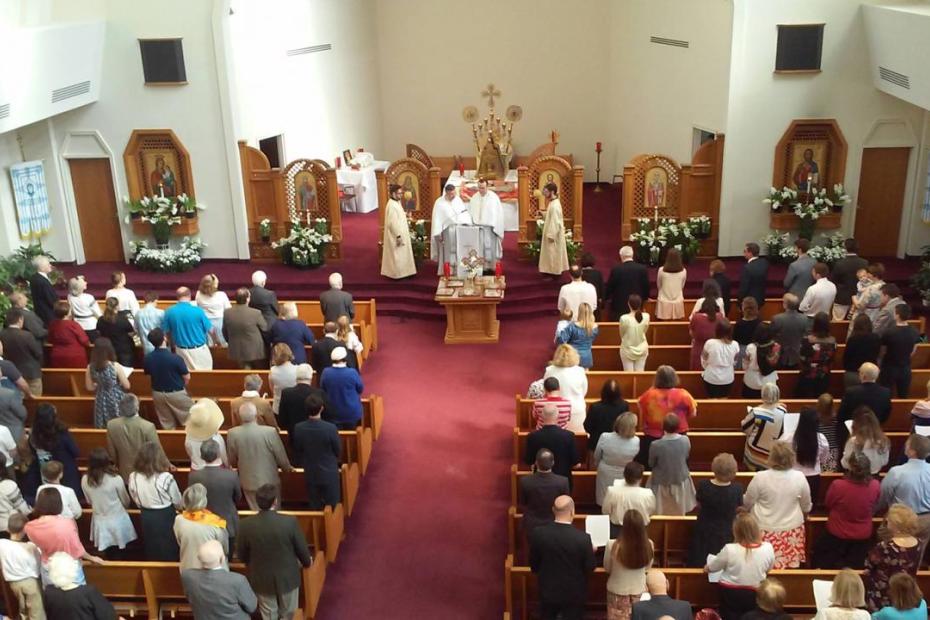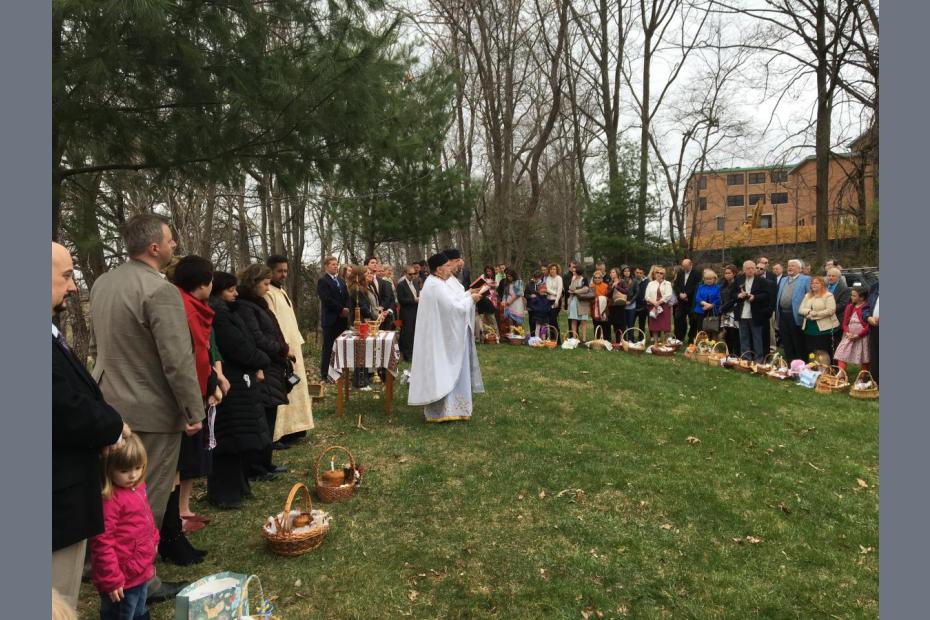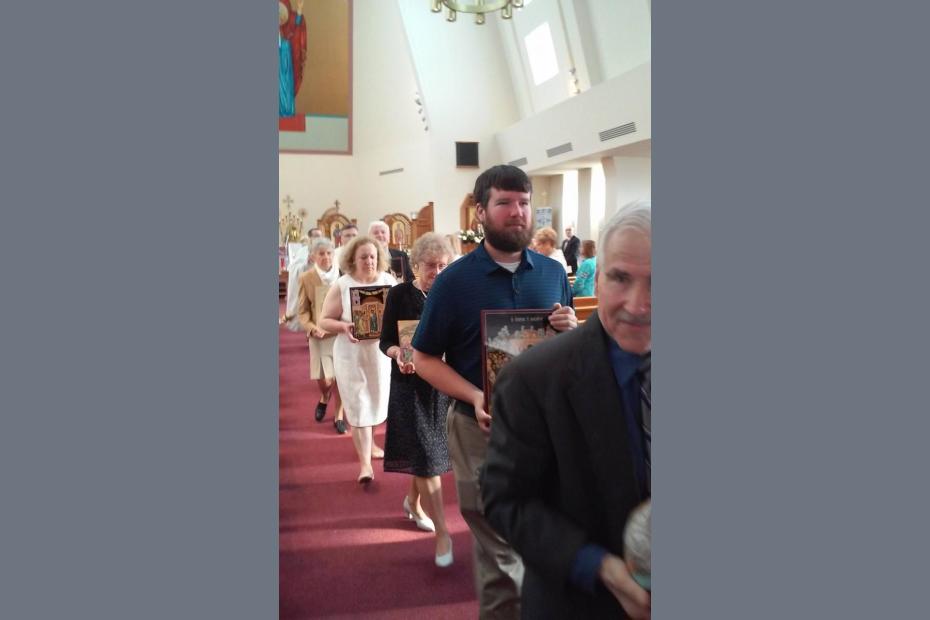Migration has radically expanded the footprint of the Ukrainian Greek Catholic Church in the last 135 years, and brought the Church into very different cultural contexts. Ukrainians from the Greek Catholic heartlands of Galicia and Transcarpathia began migrating west in the 1880s to American coal mines and factories, and to Brazilian, Argentinian and Canadian farmlands. Ukrainian Catholics have subsequently settled throughout the world, including in Australia and New Zealand, but the largest numbers outside the territory of Ukraine are in Argentina, Brazil, Canada, the United States and Europe.1
In many of those countries Ukrainians built distinctive cultural enclaves, some of which endured over the long run, or have been supported by successive waves of emigration. In many, however, assimilation has also been a challenge.
By World War I, the state of Pennsylvania in the United States was home to a Greek Catholic diocese with 152 parishes and about 500,000 parishioners. Many immigrants arrived with little sense of national identity—Ukrainian national identity was only beginning to rekindle at home at the time—but developed that identity in the United States in light of local and European developments.2 In 1924, after bitter nationalist feuds between Transcarpathian and Galician Byzantine Catholics (both regions lie today within Ukraine’s borders, and had until World War I been part of the Austro-Hungarian empire), Rome granted the Transcarpathians separate status in a distinct, newly designated Byzantine Catholic Church headquartered in America. More than half of those 500,000 Pennsylvania Greek Catholics went over to the newly recognized Ruthenian Byzantine Catholic Church in America.3
In 2017, there were more than 200 Ukrainian Greek Catholic parishes in the United States, primarily in the Northeast and north central parts where Ukrainian migrants originally settled. Official counts of Ukrainian Catholics in the United States have declined consistently and precipitously since 1990, when the four eparchies counted more than 158,000 members, to 2017, when they counted 49,000 members.
Ukrainians seeking farmland settled in Brazil in the late 19th century, particularly in the southern state of Paraná. Ukrainian-Brazilians created distinctive Ukrainian cultural enclaves there, the largest of which grew into the small city of Prudentopolis. Even though migration slowed to a trickle nearly a century ago, Ukrainian-Brazilians in rural areas still speak Ukrainian, and it is taught in schools. Religious life there remains distinctly Byzantine Catholic, and Ukrainian Catholic churches are a primary means of embodying and imparting Ukrainian cultural identity.4 Recent Church statistics claim 173,000 Ukrainian Greek Catholics in two dioceses in Paraná. According to one description in the 1990s, Ukrainians in Brazil were still largely poor farmers, and “in these communities, churches are the main, and often the only, focus of communal life.”5
Some 70,000 Ukrainians, primarily from Galicia, migrated to Argentina from the last years of the 19th century to 1950. Initially they traveled to the Argentine province of Misiones, which borders Paraná, and to Buenos Aires, but in the interwar period, settlement was more dispersed in inland provinces. In 1994, one author estimated that the majority of Ukrainians in Argentina identified with the Ukrainian Greek Catholic Church. “Active participation in organized religious life,” he said, “is relatively low, especially in urban areas and the provinces” that were not well served by Greek Catholic clergy for years. In Misiones province, participation, at least at liturgy, was said to be much higher.6
Large-scale Ukrainian migration to Canada began around 1900 and continued in several waves, first to the western prairie lands, from Winnipeg to Alberta, where they were steered by Canadian officials, given land and built a string of Ukrainian villages. A second wave, somewhat smaller, brought Ukrainians to cities as industrial laborers. By 1941, the more than 300,000 Ukrainians in Canada made them the fourth largest European ethnic group in the country. Most had come from the territories that constituted the Greek Catholic heartland, in today’s Western Ukraine.7 After World War II, a wave of displaced persons, many well-educated, came as refugees to the United States and Canada.8 By the 1980s, Ukrainian-Canadian Catholics reported, the community was becoming increasingly assimilated in Canada. Some members of the community were deliberate about passing down their Ukrainian and Byzantine heritage, but others, whose connections to Ukraine might be several generations old, had not.9 A smaller wave of Ukrainian immigrants have arrived in the post-Soviet years, bringing renewed energy into many churches, but participation is still declining. In 1990 the Ukrainian Catholic Church in Canada claimed almost 202,000 adherents, but by 2017 that number had declined to just over 48,000.
A church that legally existed only in diaspora
From the end of World War II until 1990, the Ukrainian Greek Catholic Church did not legally exist in Ukraine, after its churches were taken and clergy suppressed or drafted into the Orthodox Church. In Ukraine it existed to some degree underground, and was headed out of Rome by a series of Major Archbishops, but the UGCC was, at the surface, almost entirely a diaspora Church.
In the 1990s and the 21st century, Catholics in the diaspora were particularly supportive in helping the restoration of the Church in Ukraine, but even as it grew so rapidly again in Ukraine, Greek Catholic practice in the United States and Canada has been shrinking significantly. Official Church figures show the number of Ukrainian Greek Catholics in the United States having declined from about 158,500 in 1990 to 49,000 in 2017, and in Canada from about 157,500 in 1990 to 48,000 in 2017. The number in Brazil, on the other hand, are said to have grown from 130,000 to 172,800, and in Argentina from 122,000 to 169,600. 10
The rapid decline in the U.S. and Canada has been linked to the decline of ethno-religious enclaves that once supported ethnic communities, as people move from older, concentrated neighborhoods to new places, often some distance from the relatively small number of Ukrainian Greek Catholic churches.11
Poland, which borders Ukraine, is home to some 55,000 Ukrainian Greek Catholics.12 Strictly speaking, many of the Greek Catholics in Poland are not in diaspora from Ukraine. The province of Galicia, the Austro-Hungarian territory that was the heartland of the Greek Catholic church, was split when Austrian control ended after World War I. The western half became part of Poland, and rather than become part of the Roman rite Church, Catholics continued as members of the Greek or Byzantine rite. “Because of the deportations of the 1940s, more than half now live outside what was their Galician Catholic homeland, scattered across western and northern Poland.”13 In Soviet times, the UGCC continued to function in Poland under the wing of the Roman Church, though the UGCC was legally eliminated by the government.
One study of Ukrainian Greek Catholics in Poland emphasizes many ways—first communions, “Latin” traditional images of the Virgin Mary and other western Catholic holy pictures, kneeling during prayer, Rosary, Sacred Heart and Stations of the Cross devotions, Eucharistic exposition in a monstrance—that Latin Catholic traditions continue among Greek Catholics in Poland. The study asserts, though, that these traditions endure almost entirely among older Greek Catholics, and that Vatican-sanctioned Byzantinization since Vatican II has shifted the ground for younger believers, who want to adhere to Eastern traditions. 14
- 1An in depth analysis of Ukrainians around the world was gathered in Ukraine and Ukrainians Throughout the World: A Demographic and Sociological Guide to the Homeland and Its Diaspora, ed. Ann Lencyk Pawliczko (Toronto: University of Toronto Press, 1994), 426-428.
- 2Paul Robert Magocsi, A History of Ukraine (Toronto: University of Toronto Press, 1996), 426.
- 3Orest Subtelny, Ukraine: A History (Toronto: University of Toronto Press / Canadian Institute of Ukrainian Studies, 1989), 543; Daria Markus and Oleh Wolowyna, “Ukrainians in the United States of America” in Ukraine and Ukrainians Throughout the World: A Demographic and Sociological Guide to the Homeland and Its Diaspora, ed. Ann Lencyk Pawliczko (Toronto: University of Toronto Press, 1994), 357-385.
- 4Subtelny, Ukraine: A History, 545-6; Mykhailo Wasylyk, “Ukrainians in Brazil” in Ukraine and Ukrainians Throughout the World: A Demographic and Sociological Guide to the Homeland and Its Diaspora, ed. Ann Lencyk Pawliczko (Toronto: University of Toronto Press, 1994), 443-449.
- 5Subtelny, Ukraine: A History, 566.
- 6Wsevolod W. Isajiw and Andrij Makuch, “Ukrainians in Canada” in Ukraine and Ukrainians Throughout the World: A Demographic and Sociological Guide to the Homeland and Its Diaspora, ed. Ann Lencyk Pawliczko (Toronto: University of Toronto Press, 1994), 332-333.
- 7Mykhailo Wasylyk, “Ukrainians in South America” in Ukraine and Ukrainians Throughout the World: A Demographic and Sociological Guide to the Homeland and Its Diaspora, ed. Ann Lencyk Pawliczko (Toronto: University of Toronto Press, 1994), 426-428.
- 8Subtelny, Ukraine: A History, 546-558.
- 9Myroslaw Tataryn, “Canada’s Eastern Christians” in Christianity and Ethnicity in Canada, eds. Paul Bramadat and David Seljak (Toronto: University of Toronto Press, 2008), 319-323.
- 10Figures are derived from the Vatican’s Annuario Pontificio, helpfully collected by Fr. Ronald Roberson.
- 11Peter Galadza, “Developments since 1989: North America,” in Churches In-between: Greek Catholic Churches in Postsocialist Europe, eds. Stéphanie Mahieu and Vlad Naumescu (Berlin: Lit, 2008), 145-148. Galadza also suggests that many Greek Catholics started looking to Roman Catholic churches for spiritual belonging and simply connected the Greek Catholic or other Ukrainian institutions for ethnic identity. He also suggests that the numbers may have been inflated in the past in many eparchies (dioceses), a practice that was disincentivized when the national episcopal conferences began assessing contributions from eparchies on a per capita basis.
- 12Annuario Pontificio, collected by Fr. Ronald Roberson. The scholar Chris Hann claims there were 123,000 Greek Catholics in Poland in 2000, “according to official statistics,” but does not cite the source. Annuario Pontificio numbers have declined since 2000, from 85,000. Chris Hann, “The Limits of Galician Syncretism: Pluralism, Multiculturalism, and the Two Catholicism” in Galicia: a Multicultured Land, eds. Christopher Hann and Paul Robert Magocsi (Toronto: University of Toronto, 2005), 212.
- 13Hann, “The Limits of Galician Syncretism,” 212.
- 14Juraj Buzalka, “Syncretism among the Greek Catholic Ukrainians in Southeast Poland” in Churches In-between: Greek Catholic Churches in Postsocialist Europe, eds. Stéphanie Mahieu and Vlad Naumescu, (Berlin: Lit, 2008),183-205.



